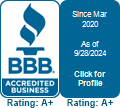
Common Credit Limit Myths Demystified
Credit limits promise financial freedom and flexibility but are often shrouded in misconceptions. Even the most informed of us can become confused. Understanding the truth behind these myths can empower you to make informed decisions about your credit usage. Let’s debunk some common credit limit myths and shed light on the realities of managing your credit effectively.
Myth 1: Your Credit Limit Reflects Your Financial Health
Reality: While a higher credit limit can indicate a certain level of financial trustworthiness, it doesn’t necessarily equate to financial stability. Issuers determine credit limits based on various criteria such as income, credit score, payment history, debt-to-income ratio, and the lender’s risk assessment. However, your credit limit doesn’t necessarily reflect your ability to manage your finances effectively. It is crucial to focus on maintaining a good credit score and practicing responsible credit habits, whatever your credit limit.
Myth 2: Reducing Your Credit Limit Raises Your Score.
Reality: Lowering your credit limit may hurt your credit score. Your credit utilization ratio is the proportion of available credit you use, and it plays a significant role in your credit score calculation. If you frequently use a high percentage of your available credit, your utilization ratio will increase, potentially lowering your score. Also, a lower credit limit may limit flexibility in emergencies or when making larger purchases. Therefore, put more effort into responsibly managing your credit by keeping your balances low and making on-time payments than you would in lowering your limit.
Myth 3: Requesting A Credit Limit Increase Will Hurt Your Credit Score
Reality: Contrary to popular belief, asking for a credit limit increase will typically have a minimal impact on your credit score. When you request an increase, the issuer may perform a hard inquiry, which can temporarily ding your score by a few points. However, the long-term benefits of a higher credit limit, such as a lower credit utilization ratio, can outweigh the short-term dip in your score. Just be sure to use the additional credit responsibly.
Myth 4: A Higher Credit Limit Invariably Leads To More Debt
Reality: While it is true that a higher credit limit provides you with more borrowing power, it doesn’t necessarily mean you’ll accumulate more debt. Some people may spend more when their credit limit is higher, but it ultimately comes down to their spending habits and financial discipline.
Raising your credit limit may be advantageous if you keep your credit utilization ratio low. Increasing the credit limit to $5,000, for instance, can help your utilization ratio and raise your credit score if you presently have a credit card with a $1,000 limit and regularly use 80% of it.
It can be a calculated step towards bettering your financial situation, provided you stay within your means and pay your debts in full.
Myth 5: Credit Limit Increases are Automatic
Reality: While some credit card issuers may periodically review accounts and offer automatic credit limit increases to eligible cardholder, it cannot be guaranteed. Factors such as payment history, credit score, and income may influence whether you receive an automatic increase. If you believe you’re eligible for a higher limit or need one for specific reasons, it’s usually best to request an increase directly from your issuer
Myth 6: Utilizing Your Full Credit Limit Is Ideal
Reality: While having access to a higher credit limit can provide financial flexibility, maxing out your credit cards can adversely affect your credit score and monetary well-being. High credit utilization ratios signal to lenders that you may be overextended financially, which can lower your credit score and make it harder to qualify for credit in the future. You must keep your credit utilization below 30% for optimal credit health.
Bottom Line
Understanding the truths behind common credit limit myths is essential for making informed decisions about credit card usage and overall financial management. Your credit limit is a tool to use responsibly, not a license to spend recklessly. By maintaining a healthy balance between credit utilization and monetary stability, you can harness the benefits of credit cards while avoiding common pitfalls.


